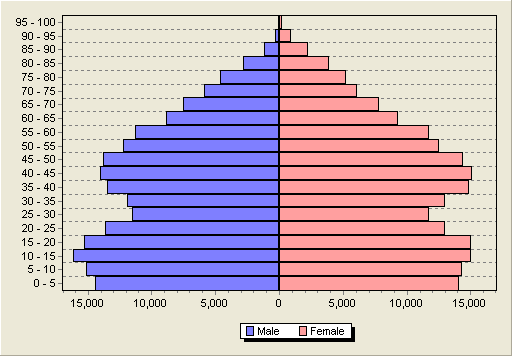Demographics
Changes in population are typically modelled using an age-cohort model. This calculates the number of men and women in each age cohort. Each year, everyone gets a year older, new babies are born and a certain share of people die. Fertility and mortality rates control the number of births and deaths. These rates are derived from census data, which is also used as the initial number of men and women.
The added value of a demographic model in Metronamica is not just that population growth can be modelled more precisely. It also allows for more meaningful scenarios by introducing slight changes to the fertility and mortality rates over time. For example, you can investigate the effects of an ageing population or policy incentives for birth control among teenagers. The demographics model gives a picture of population dynamics presented as a population pyramid. It can also be used in connection with the macro-economic component to obtain a dynamic input for total and active population. These can be used to model consumption and workforce, respectively.
Example of a population pyramid


